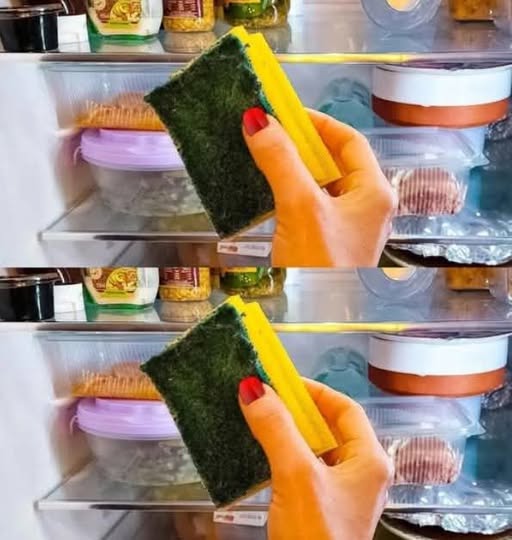We’re always on the lookout for simple and cost-effective tricks to make our lives easier and save money in the process. From reducing energy consumption to preventing food waste, small adjustments around the house can lead to big savings. One such surprisingly effective trick that can help save money—and preserve your food—is placing a sponge in your fridge. While it may sound strange at first, this simple hack has a number of benefits that can extend the life of your food, reduce waste, and even cut down on your electricity bill. Let’s explore how and why putting a sponge in the fridge could be your new favorite household tip.
Why Does This Work?
The idea behind this trick is simple: sponges are excellent at absorbing moisture. Moisture is one of the leading causes of spoilage in food, especially in a refrigerator. Fruits, vegetables, and other perishable foods can start to rot or mold when exposed to excess moisture, which leads to faster spoilage and ultimately, wasted food.
By placing a clean sponge in the fridge, you can absorb excess moisture before it has the chance to build up. This helps create a drier, more stable environment inside the fridge that is less conducive to the growth of bacteria and mold, ultimately extending the shelf life of your food.
How to Do It
The process couldn’t be simpler:
- Choose the Right Sponge:
- You don’t need anything fancy. A basic cellulose or synthetic sponge will do the job perfectly. You may want to choose one that is absorbent but not too large—just enough to hold moisture without taking up too much space.
- Dampen the Sponge:
- Lightly dampen the sponge with water. Don’t soak it completely; it should be damp enough to absorb moisture but not dripping wet. A sponge that’s too wet might release more moisture than it absorbs.
- Place the Sponge in the Fridge:
- Find a good spot inside your fridge where the sponge can sit comfortably, such as on a shelf or in the vegetable drawer. Avoid putting it near food that is overly moist or raw, as this could affect the food’s quality.
- Check Regularly:
- Make sure to check the sponge once every few days to see how much moisture it’s absorbed. If the sponge is completely saturated, simply rinse it out and re-dampen it before returning it to the fridge.
- Replace the Sponge When Necessary:
- Over time, the sponge can become dirty or wear out, so it’s important to replace it regularly (at least once a month) to ensure that it’s still doing its job effectively.
Benefits of Using a Sponge in Your Fridge
1. Extended Freshness of Produce
One of the primary advantages of using a sponge in the fridge is that it helps keep fruits and vegetables fresher for longer. Produce like berries, lettuce, and cucumbers tends to spoil quickly due to excess moisture in the fridge. By absorbing moisture from the air, the sponge prevents the growth of mold and bacteria, which can otherwise lead to wilting, sogginess, or rot. This means that your fresh fruits and vegetables will last longer, and you’ll spend less money replacing spoiled items.
2. Preventing Freezer Burn
In addition to helping with moisture control in the fridge, the sponge can also help reduce the likelihood of freezer burn on frozen foods. Freezer burn occurs when frozen food is exposed to air, which can cause it to dry out and develop off flavors. The sponge can help keep the humidity levels balanced, especially in the freezer compartment, and prevent air from damaging your frozen goods.
Click page 2 to continue




